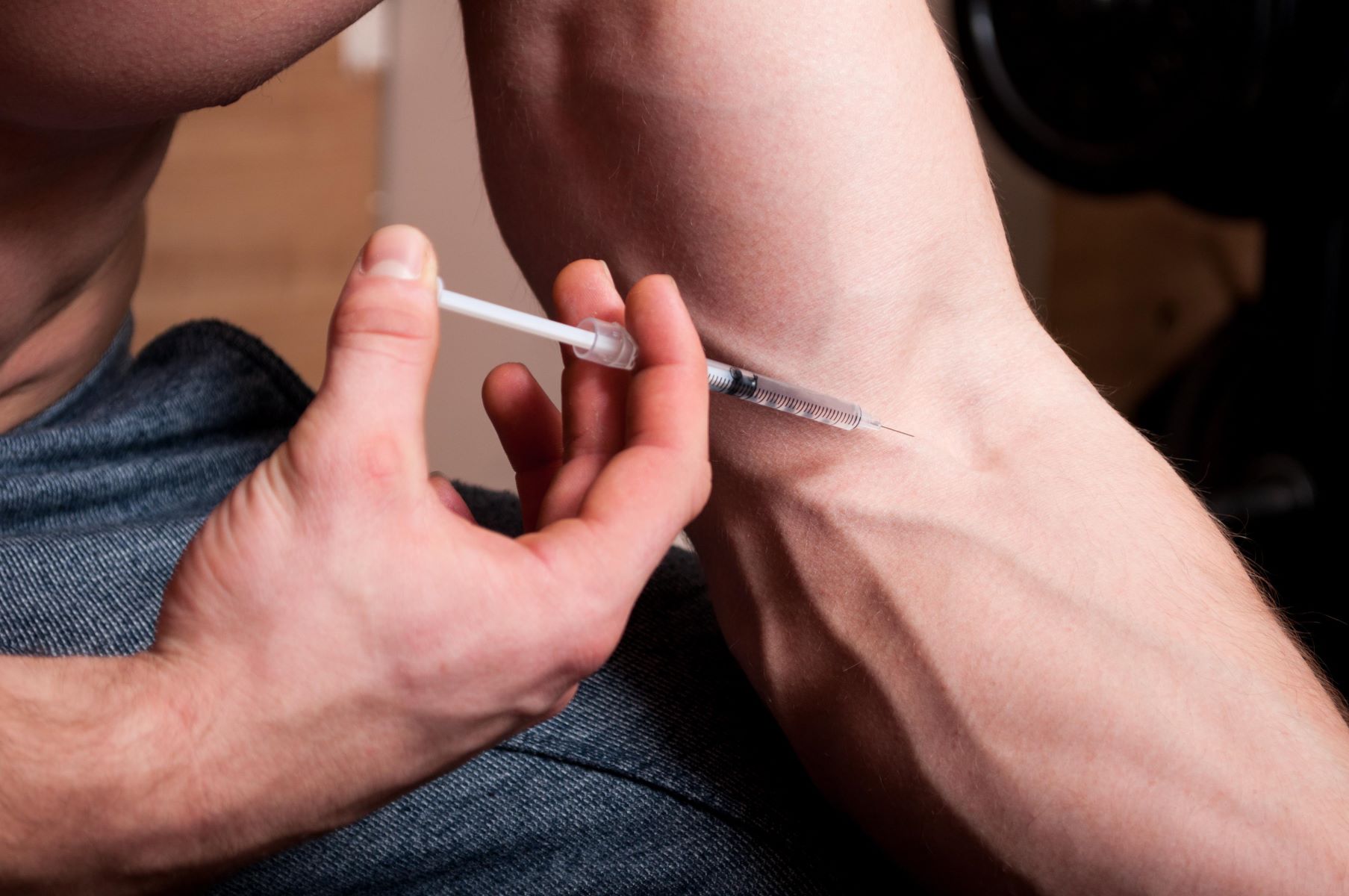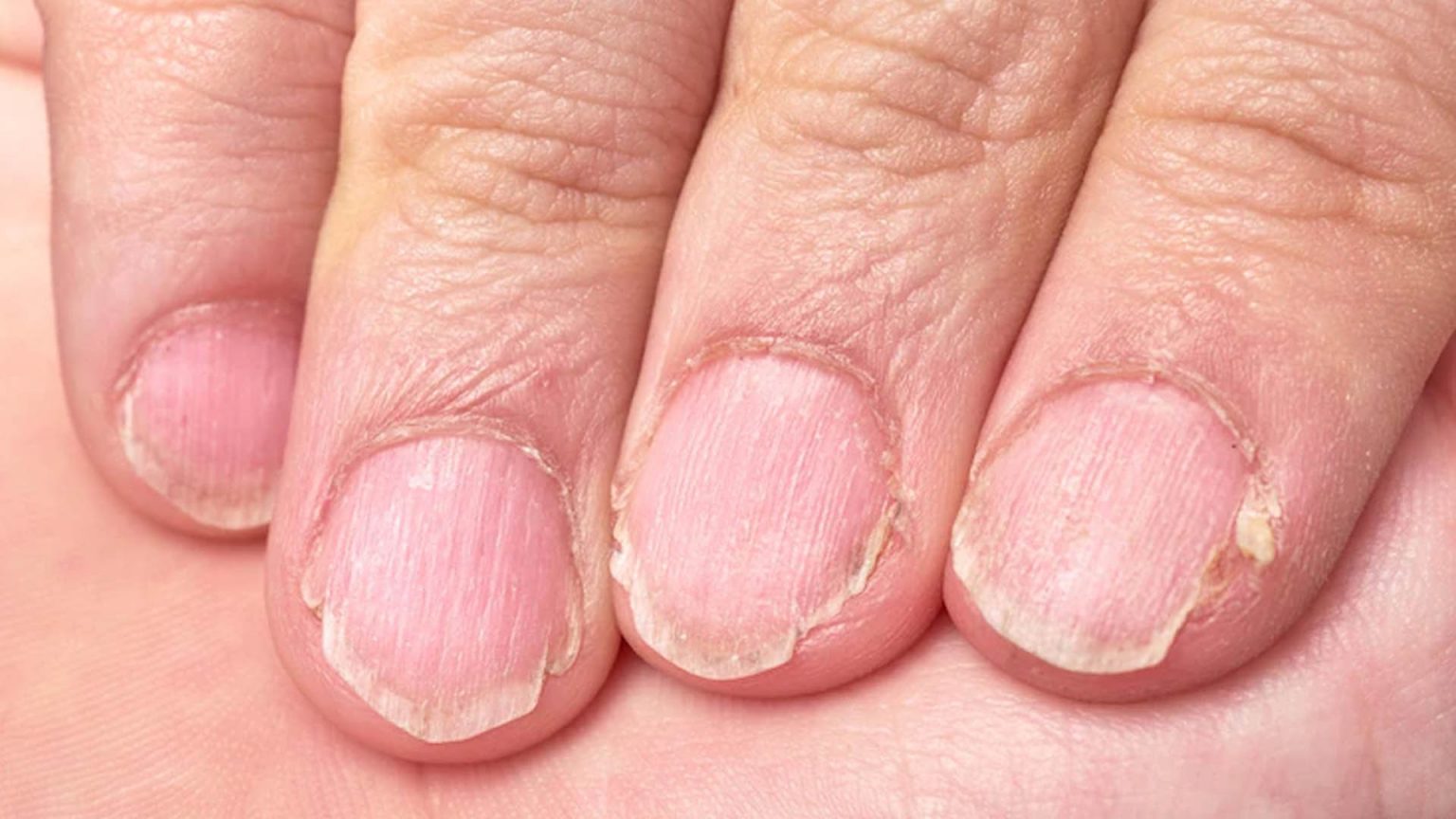

Featured
How Does Exercise Affect Female Hormones
Modified: January 2, 2024
Discover how exercise impacts female hormones and learn about the featured benefits. Enhance your understanding of the relationship between physical activity and hormone balance.
Introduction
Welcome to our in-depth exploration of how exercise affects female hormones. As women, our hormones play a vital role in regulating various bodily processes, including our menstrual cycle, fertility, mood, and overall wellbeing. Exercise has long been recognized as a powerful tool in promoting physical and mental health, but its impact on female hormones is often overlooked or misunderstood.
In this article, we will delve into the fascinating relationship between exercise and female hormones, examining how different types and intensities of exercise can affect estrogen, progesterone, testosterone, cortisol, insulin, thyroid hormones, and growth hormone levels.
Understanding the intricate interplay between exercise and hormones is crucial for women of all ages and fitness levels. Whether you’re a seasoned athlete, a casual gym-goer, or simply someone looking to incorporate more movement into your daily routine, knowing how exercise impacts your hormones can help you optimize your workouts, manage stress levels, support your reproductive health, and improve overall hormone balance.
Before we dive into the details, it’s important to note that each woman’s physiology is unique, and the hormonal response to exercise can vary. Factors such as age, genetics, current hormone levels, and individual fitness goals can influence how exercise affects hormones. Additionally, it’s essential to consult with a healthcare professional or a certified fitness expert before making any significant changes to your exercise routine.
In the following sections, we will explore the effects of exercise on specific female hormones, shedding light on how different forms of physical activity can either positively or negatively influence hormone production and balance. So, let’s strap on our sneakers and embark on this hormone-filled journey!
Role of Exercise in Hormone Regulation
Exercise serves as a potent regulator of hormone production and balance in the female body. When we engage in physical activity, several physiological processes are triggered, leading to changes in hormone levels. These changes can have significant implications for our overall health and wellbeing.
One of the primary mechanisms through which exercise influences hormones is by affecting the endocrine system. The endocrine system is responsible for producing and releasing hormones into the bloodstream. Through exercise, various feedback mechanisms come into play, influencing hormone secretion and regulation.
Regular exercise helps to promote hormone balance by enhancing the body’s ability to utilize and metabolize hormones efficiently. It increases blood circulation, which aids in the transport of hormones to their target cells and organs. Additionally, exercise stimulates the release of neurotransmitters and endorphins, which can have a positive impact on mood, stress levels, and hormone regulation.
Exercise can also reduce excess levels of hormones, such as estrogen, by promoting weight loss and reducing body fat. Adipose tissue (fat cells) can produce and store excess estrogen, leading to hormonal imbalances. Engaging in physical activity helps to burn calories, which can contribute to weight loss, ultimately helping to maintain optimal hormone levels.
Beyond its direct effects on hormone production and balance, exercise also plays a crucial role in supporting overall health, which indirectly affects hormonal health. For example, regular exercise can help regulate blood sugar levels and insulin sensitivity. Insulin is a hormone that helps to regulate blood sugar levels, and when it is functioning optimally, it can have positive effects on other hormones, such as estrogen and progesterone.
In addition to its impact on hormone regulation, exercise offers numerous other benefits, such as improving cardiovascular health, boosting mood, reducing stress, and enhancing cognitive function. These benefits can contribute to overall hormonal balance and improve overall quality of life.
Now that we understand the general role of exercise in hormone regulation, let’s explore how specific hormones are affected by different types and intensities of exercise.
Effects of Exercise on Estrogen Levels
Estrogen is a primary female sex hormone responsible for regulating the menstrual cycle, supporting reproductive function, and maintaining bone health. The effects of exercise on estrogen levels can vary depending on various factors, including the intensity and duration of the activity.
Regular exercise, especially high-intensity workouts and weight-bearing exercises, can have a positive impact on estrogen levels. During exercise, the body experiences an increase in blood flow and oxygen delivery to the muscles, which can stimulate the release of estrogen. This release of estrogen can help regulate the menstrual cycle and support reproductive health.
On the other hand, excessive exercise or extreme energy restriction, such as in the case of excessive endurance training or restrictive eating disorders, can lead to low estrogen levels. When energy intake is inadequate or exercise is done excessively, the body can go into a state of energy conservation, leading to hormonal changes. This can result in irregular menstrual cycles, amenorrhea (absence of menstruation), and even infertility. Low estrogen levels can also potentially contribute to bone loss and an increased risk of osteoporosis.
It’s important to find a balance when it comes to exercising for estrogen regulation. Moderate-intensity exercises, such as brisk walking, jogging, or cycling, have been shown to maintain regular estrogen levels and promote overall hormonal balance. It’s also essential to ensure proper nutrition and adequate calorie intake to support hormone production and avoid excessive energy restriction.
Although exercise can have positive effects on estrogen levels, it’s important to note that individual variations exist. Women with certain medical conditions or hormonal imbalances may experience different responses to exercise. Consulting with a healthcare professional or a certified fitness expert can help you understand how exercise might specifically impact your estrogen levels and overall hormonal health.
Now that we’ve explored the effects of exercise on estrogen levels, let’s dive into the impact of physical activity on another important female hormone – progesterone.
Effects of Exercise on Progesterone Levels
Progesterone is another crucial hormone in the female body, playing a vital role in regulating the menstrual cycle, supporting pregnancy, and preparing the uterus for implantation. The effects of exercise on progesterone levels can vary depending on the intensity, frequency, and duration of the physical activity.
Moderate-intensity exercise has been shown to have a positive impact on progesterone levels. Regular physical activity can promote hormone balance and support healthy progesterone production. Exercise stimulates blood flow to the reproductive organs, improving overall reproductive health and supporting the natural fluctuations in progesterone levels throughout the menstrual cycle.
However, it’s important to note that extreme exercise or excessive training can disrupt menstrual regularity and potentially lead to low progesterone levels. Overtraining or engaging in intense workouts while not allowing for adequate rest and recovery can put stress on the body, leading to hormonal imbalances. This can result in irregular menstrual cycles or even amenorrhea.
It’s crucial to find the right balance when it comes to exercise and progesterone regulation. Engaging in regular moderate-intensity exercises, such as yoga, Pilates, or moderate cardio activities, can support healthy progesterone levels while also providing overall health benefits. It’s also important to listen to your body and incorporate rest days into your exercise routine to allow for proper recovery.
Additionally, maintaining a nutritious diet that supports hormonal health is essential. Adequate nutrient intake, especially healthy fats and micronutrients, can support progesterone production and balance. Consulting with a healthcare professional or a registered dietitian can provide personalized guidance on nutrition and exercise for progesterone regulation.
Understanding how exercise affects progesterone levels can be particularly valuable for women trying to conceive. Progesterone plays a crucial role in supporting pregnancy and implantation, so maintaining optimal progesterone levels can be beneficial for fertility and reproductive health.
Now that we’ve explored the impact of exercise on estrogen and progesterone levels, let’s move on to examining how exercise influences testosterone levels, a hormone often associated with male physiology but also present in women.
Effects of Exercise on Testosterone Levels
Testosterone is commonly associated with male physiology, but it is also present in women and plays a crucial role in various aspects of female health, such as regulating muscle mass, bone density, and libido. The effects of exercise on testosterone levels in women can depend on several factors, including the type of exercise, intensity, and duration.
Engaging in resistance training or strength-based exercises has been shown to have a positive impact on testosterone levels in women. When we lift weights or challenge our muscles through resistance exercises, it stimulates the release of testosterone. This increase in testosterone helps to support muscle growth, strength development, and overall physical performance.
However, it’s important to note that the increase in testosterone levels due to exercise in women is generally much lower compared to men. Women have significantly lower baseline levels of testosterone, so the impact of exercise on testosterone is more modest. This means that women shouldn’t be concerned about developing a “bulky” physique from lifting weights. Instead, resistance training can help to sculpt and strengthen muscles without significantly increasing testosterone levels.
On the other hand, excessive or prolonged endurance exercise, such as long-distance running or extremely intense cardio workouts, may temporarily decrease testosterone levels in women. This is often associated with the physiological stress that extreme endurance exercise can place on the body. However, these changes are typically transient, and testosterone levels usually return to normal once the body has had adequate time to recover.
It’s important to find a balance when it comes to exercise and testosterone levels. Incorporating a combination of resistance training and cardiovascular exercise into your routine can help maintain optimal testosterone levels while providing a range of health benefits. Additionally, ensuring proper nutrition and adequate rest and recovery is crucial for hormone balance and overall performance.
It’s worth noting that individual variations exist when it comes to how exercise affects testosterone levels in women. Factors such as genetics, age, and hormone levels can influence the response to exercise. It’s always a good idea to consult with a healthcare professional or a certified fitness expert to design an exercise program that suits your needs and goals while supporting optimal hormone balance.
Now that we’ve explored the effects of exercise on estrogen, progesterone, and testosterone levels, let’s move on to examining the relationship between exercise and cortisol, a hormone often associated with stress.
Exercise and Cortisol Levels
Cortisol, commonly known as the “stress hormone,” plays a crucial role in the body’s stress response. It helps regulate metabolism, immune function, and inflammation. Exercise can have both positive and negative effects on cortisol levels, depending on the intensity, duration, and timing of physical activity.
Engaging in regular moderate-intensity exercise has been shown to have a positive impact on cortisol levels. Moderate exercise helps to reduce chronic stress, lower cortisol secretion, and promote overall stress management. It can also improve mood and mental wellbeing, as exercise stimulates the release of endorphins, the body’s natural feel-good chemicals.
However, intense or prolonged endurance exercise can have the opposite effect on cortisol levels. When we push our bodies to the limit during intense workouts, it can lead to temporary spikes in cortisol levels. This is a normal physiological response to stress and can be beneficial during exercise. However, prolonged elevations in cortisol levels, such as those experienced in overtraining or chronic intense exercise, can lead to negative health outcomes.
Over time, excessive cortisol secretion can disrupt the balance of other hormones in the body, such as estrogen and progesterone, leading to menstrual irregularities, decreased fertility, and compromised bone health. It can also weaken the immune system and impair recovery from exercise and injury.
It’s crucial to find the right balance when it comes to exercise and cortisol regulation. Incorporating a combination of moderate-intensity exercises, such as walking, jogging, or cycling, with high-intensity workouts in moderation can help maintain optimal cortisol levels. Additionally, practicing stress-management techniques such as mindfulness, meditation, and relaxation exercises can further support cortisol regulation.
Individual responses to exercise and cortisol levels can vary. Some individuals may be more sensitive to cortisol changes, while others may be more resilient. It’s important to listen to your body and adjust your exercise routine accordingly. If you notice symptoms of excessive cortisol levels, such as chronic fatigue, poor recovery, or mood disturbances, it may be beneficial to reduce the intensity or duration of your workouts and prioritize rest and recovery.
Now that we’ve explored the effects of exercise on cortisol levels, let’s move on to examining the relationship between exercise and insulin, a hormone central to blood sugar regulation.
Exercise and Insulin
Insulin is a hormone produced by the pancreas that plays a crucial role in regulating blood sugar levels. It allows cells to take up glucose from the bloodstream and use it for energy or store it for future use. Exercise has a significant impact on insulin levels and insulin sensitivity in the body.
Engaging in regular physical activity, particularly aerobic exercise and strength training, can improve insulin sensitivity. During exercise, our muscles require more energy, leading to increased glucose uptake. This stimulates the release of insulin to facilitate the transport of glucose into the cells, thus lowering blood sugar levels. Over time, regular exercise helps to enhance insulin sensitivity, allowing the body to use insulin more effectively and maintain stable blood sugar levels.
Strength training exercises, in particular, have been shown to have a positive impact on insulin levels. Resistance exercises that challenge the muscles and promote muscle growth can help increase insulin sensitivity and improve glucose metabolism. Increasing muscle mass also leads to a higher resting metabolic rate, making the body more efficient at burning calories and regulating blood sugar levels.
Additionally, regular exercise can help with weight management, which is particularly beneficial for individuals with insulin resistance or type 2 diabetes. Maintaining a healthy weight through exercise and a balanced diet can reduce the risk of developing insulin resistance and help manage existing insulin-related conditions.
Timing of exercise can also influence insulin levels. Some studies suggest that exercising after a meal can enhance insulin sensitivity and promote better blood sugar control. This is known as the “exercise after-burn effect,” where exercise continues to benefit blood sugar levels even after the workout has ended.
It’s important to note that individual responses to exercise and insulin levels can vary. Factors such as genetics, diet, and overall lifestyle play a role in how exercise affects insulin sensitivity. Nonetheless, incorporating regular exercise, including a combination of aerobic and strength training, can have significant benefits for insulin regulation and overall metabolic health.
Consulting with a healthcare professional or a registered dietitian is recommended, especially for individuals with diabetes or insulin-related conditions, to develop a tailored exercise and nutrition plan that suits their specific needs and goals.
Now that we’ve explored the impact of exercise on insulin, let’s move on to examining the relationship between exercise and thyroid hormones.
Effects of Exercise on Thyroid Hormones
The thyroid gland plays a crucial role in regulating metabolism, energy production, and overall body temperature. Thyroid hormones, such as thyroxine (T4) and triiodothyronine (T3), are responsible for controlling these processes. Exercise can have both positive and negative effects on thyroid hormone production and balance.
Moderate-intensity exercise has been shown to have a positive impact on thyroid hormone levels. Regular exercise can stimulate the production and release of thyroid hormones, promoting energy metabolism and overall metabolic health. Exercise can also increase blood flow and the delivery of oxygen to the thyroid gland, supporting its function.
Furthermore, exercise has been shown to improve thyroid hormone conversion. T4 is converted to the active T3 form in the body, which is responsible for most of the thyroid hormone’s metabolic effects. Exercise helps facilitate this conversion, resulting in increased T3 levels and improved metabolic activity.
However, it’s important to note that extreme endurance exercise or excessive training can have a negative impact on thyroid hormone levels. Prolonged or intense exercise can lead to temporary suppression of thyroid hormone production. This is often associated with the stress that extreme exercise can place on the body. Fortunately, these changes are usually transient, and thyroid hormone levels typically return to normal with adequate rest and recovery.
Individual responses to exercise and thyroid hormones may vary. Some individuals may be more susceptible to changes in thyroid hormone levels due to exercise. Women, in particular, may experience variations in thyroid hormone production during different phases of the menstrual cycle. Consulting with a healthcare professional or an endocrinologist can provide further guidance on exercise and thyroid health based on individual circumstances.
Incorporating a moderate and balanced exercise routine, such as a combination of cardiovascular and strength training exercises, can help promote thyroid health. It’s also important to listen to your body and ensure you’re getting proper nutrition, rest, and recovery to support optimal thyroid function.
Now that we’ve explored the effects of exercise on thyroid hormones, let’s move on to examining the relationship between exercise and growth hormone, a hormone crucial for growth and tissue repair.
Exercise and Growth Hormone
Growth hormone (GH) is a hormone that plays a vital role in stimulating growth, regulating body composition, and supporting tissue repair. Exercise has been shown to have a significant impact on the secretion of growth hormone, particularly during certain types of exercise and specific conditions.
High-intensity exercise, such as resistance training and intense interval training, has been shown to stimulate the release of growth hormone. These types of exercises create an environment of metabolic stress and muscle damage, leading to an increased production and release of growth hormone. This can have positive effects on muscle growth, tissue repair, and overall body composition.
The timing and duration of exercise also play a role in growth hormone secretion. Research suggests that performing high-intensity exercises that target large muscle groups and last for a longer duration, such as heavy weightlifting or circuit training, can lead to higher growth hormone release. However, it’s important to note that growth hormone release is a transient response and returns to normal levels after exercise.
Sleep also influences growth hormone secretion, as a significant portion of GH release occurs during deep sleep. Regular exercise can help regulate sleep patterns, ensuring adequate restorative sleep and optimal growth hormone release during the night.
While exercise can stimulate growth hormone release, it’s worth noting that the actual physiological effects on growth and height are limited. Growth hormone secretion declines with age, and exercise cannot significantly increase height in adults. However, exercise can positively impact body composition, muscle strength, and overall health, which indirectly affects growth hormone activity.
It’s important to approach exercise and growth hormone regulation in a balanced manner. Consistent and varied exercise routines that incorporate both high-intensity exercises and aerobic activities can help optimize the benefits of growth hormone secretion. Additionally, maintaining a healthy lifestyle that includes proper nutrition, adequate sleep, and stress management can further support growth hormone activity and overall well-being.
Now that we’ve explored the effects of exercise on growth hormone, let’s summarize the key points we’ve covered throughout this article.
Conclusion
Exercise has a profound impact on female hormones, playing a crucial role in hormone regulation and overall health. Understanding how exercise affects estrogen, progesterone, testosterone, cortisol, insulin, thyroid hormones, and growth hormone can help women optimize their fitness routines, support reproductive health, manage stress levels, and achieve hormonal balance.
Moderate-intensity exercise, such as brisk walking, jogging, resistance training, and yoga, has generally been shown to have positive effects on hormone levels. It can support estrogen and progesterone balance, increase testosterone levels within a healthy range, improve insulin sensitivity, regulate cortisol secretion, and enhance thyroid hormone production. Exercise can also stimulate growth hormone release, facilitating tissue repair and overall body composition.
However, it’s important to find a balance when it comes to exercise. Excessive or extreme exercise, as well as energy restriction, can lead to hormonal imbalances, disrupt menstrual cycles, and impact overall health. Listening to your body, incorporating rest days, and maintaining proper nutrition are essential for supporting optimal hormone function and avoiding overtraining.
Individual responses to exercise and hormone regulation can vary, and factors such as genetics, age, and existing medical conditions may influence these responses. Consulting with a healthcare professional or a certified fitness expert can provide personalized guidance on exercise strategies tailored to specific needs and goals.
Incorporating regular physical activity into your routine is not only beneficial for hormone regulation but also offers numerous other health benefits, including improved cardiovascular health, reduced stress, enhanced mood, and increased overall well-being.
So, let exercise be your ally in supporting hormone balance and achieving optimal health. Lace up those sneakers, listen to your body, and embark on the journey to a healthier, happier you!









